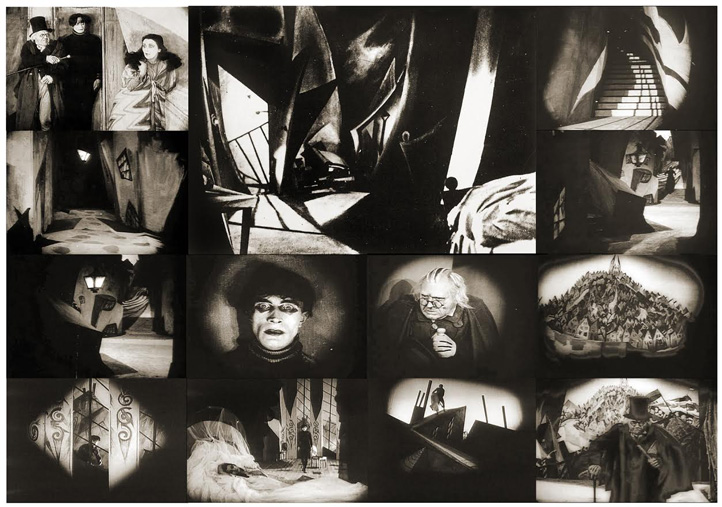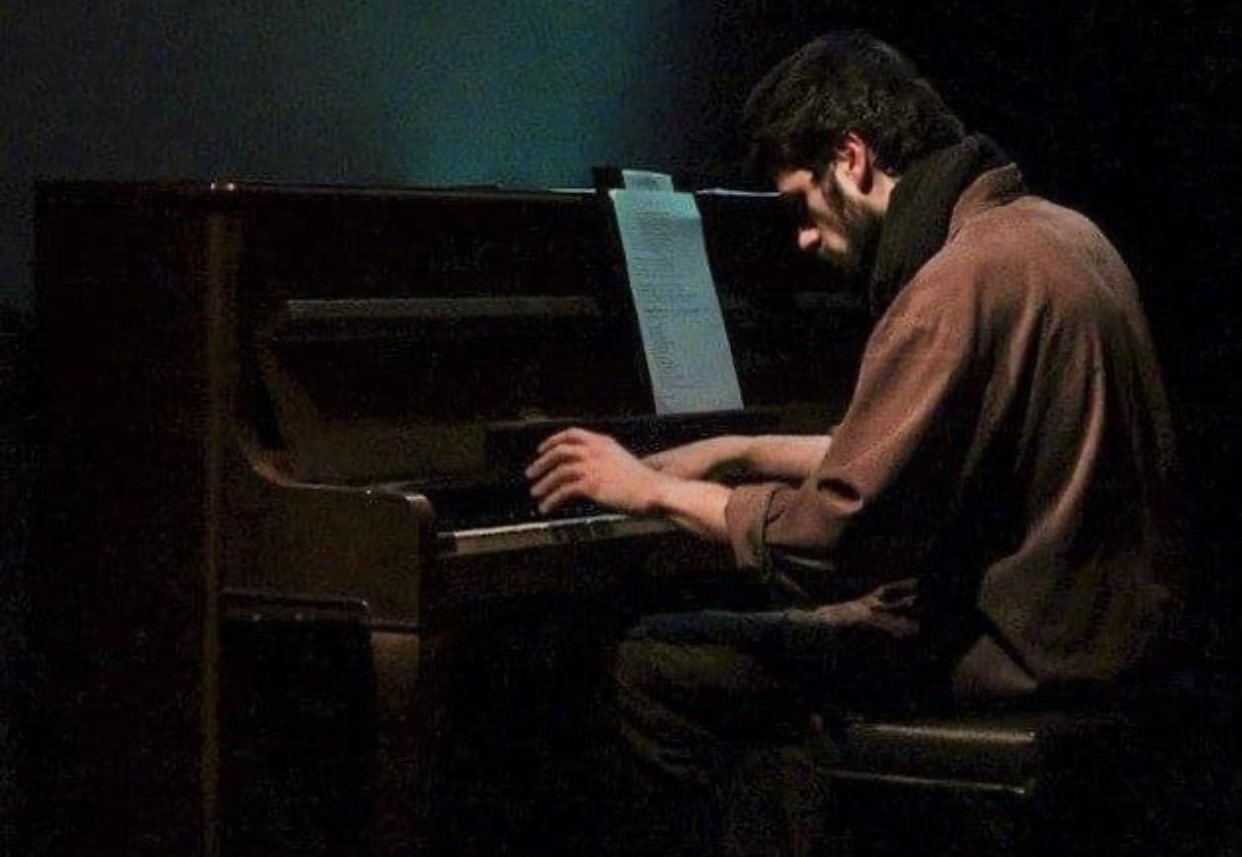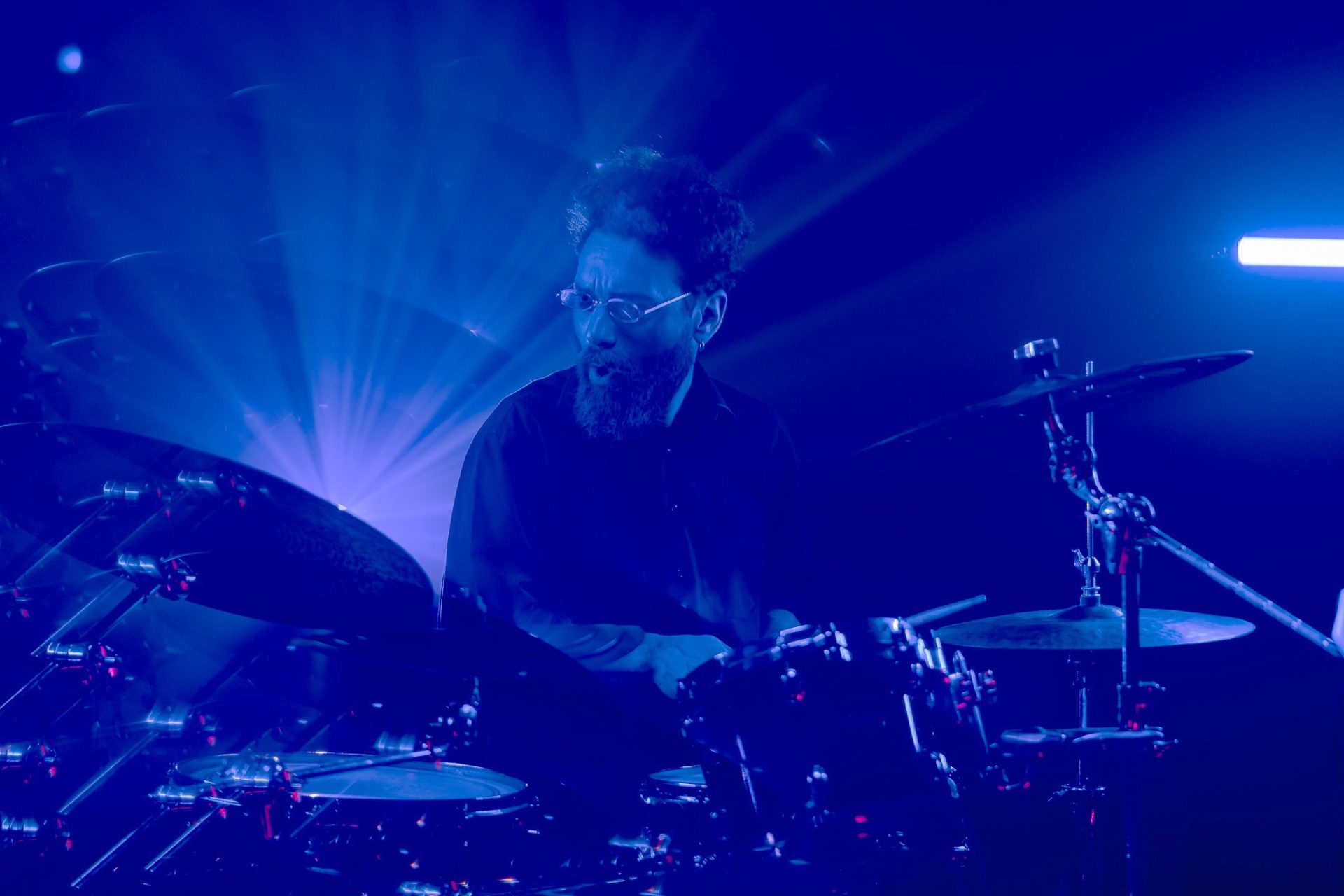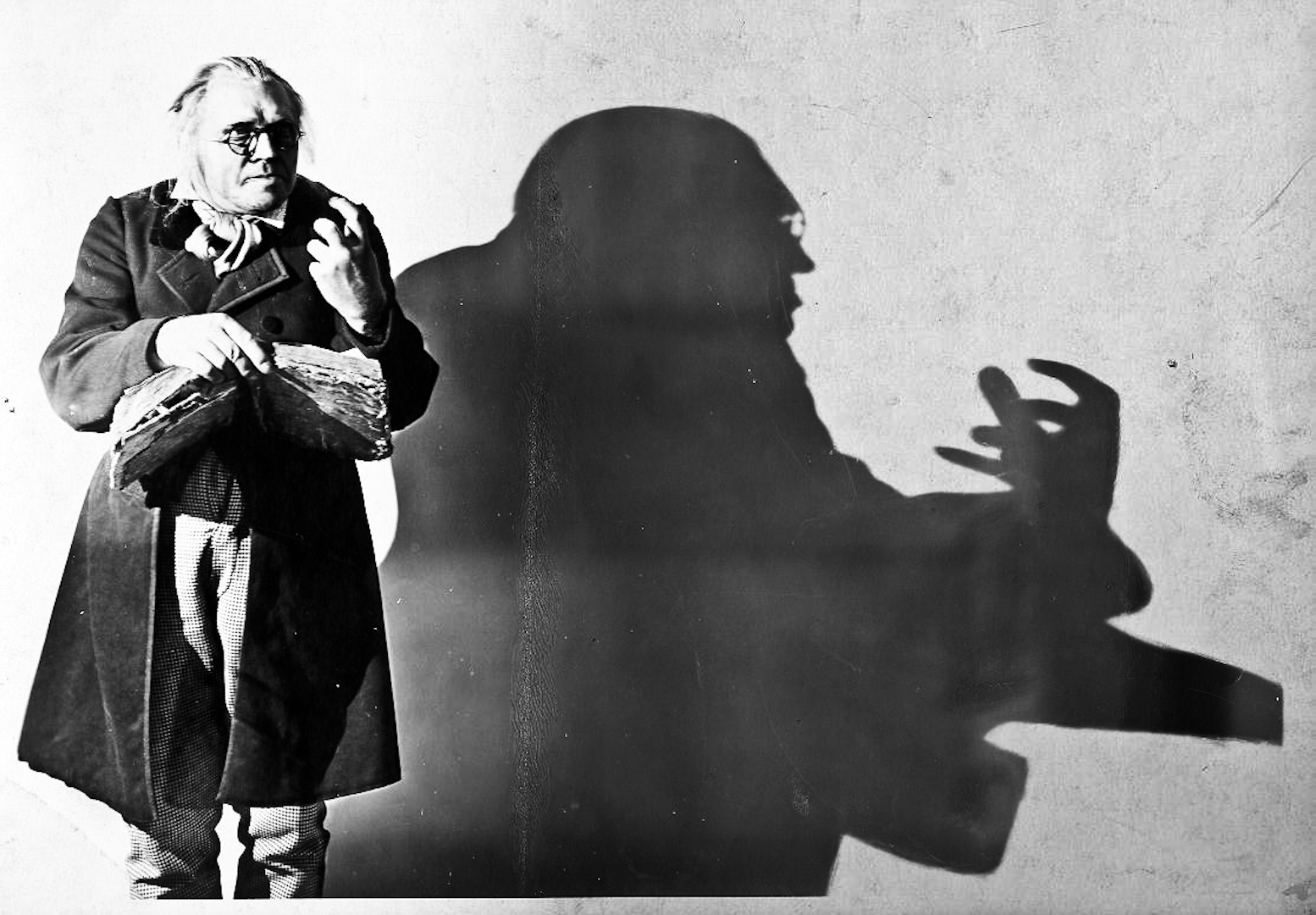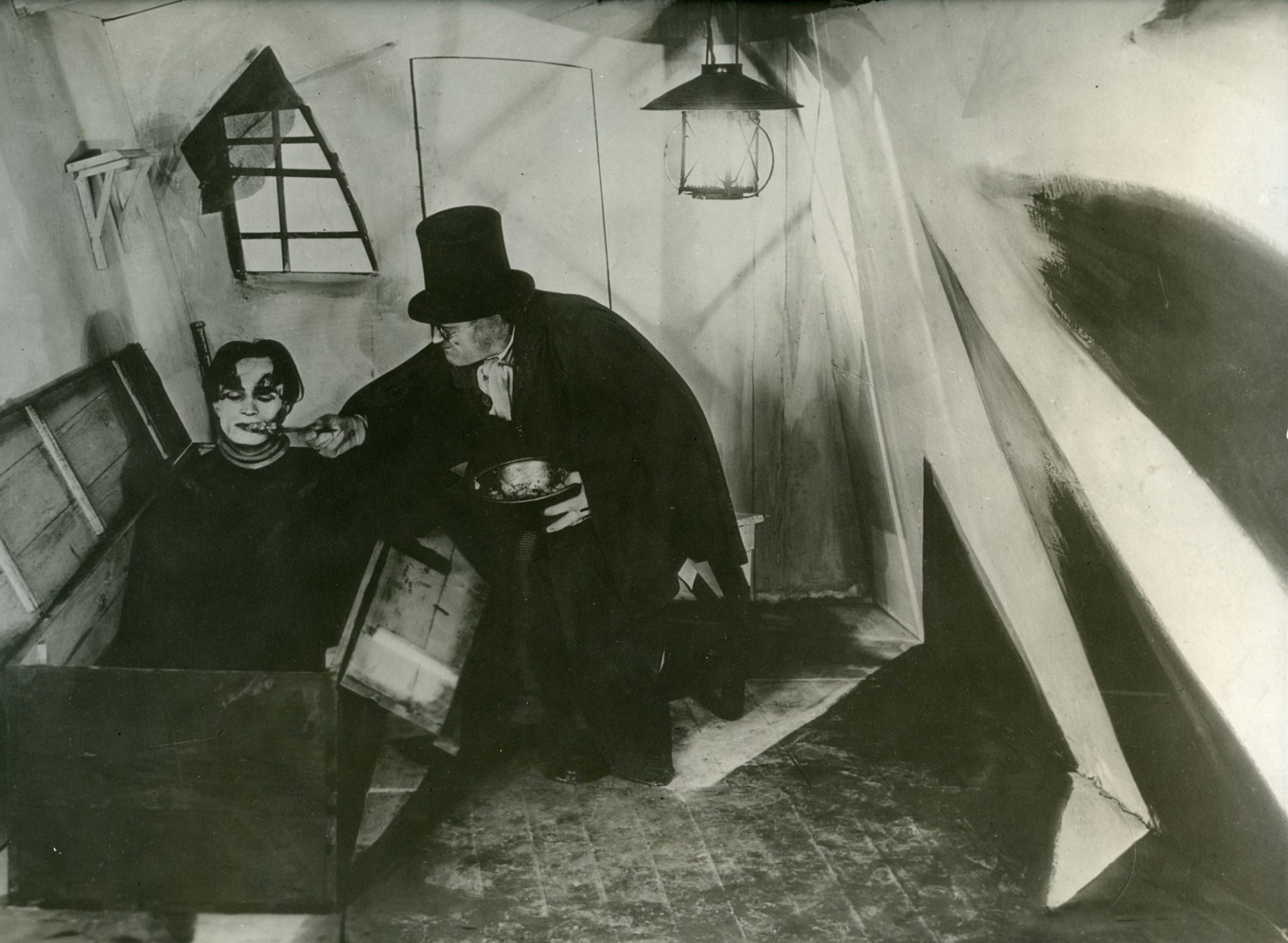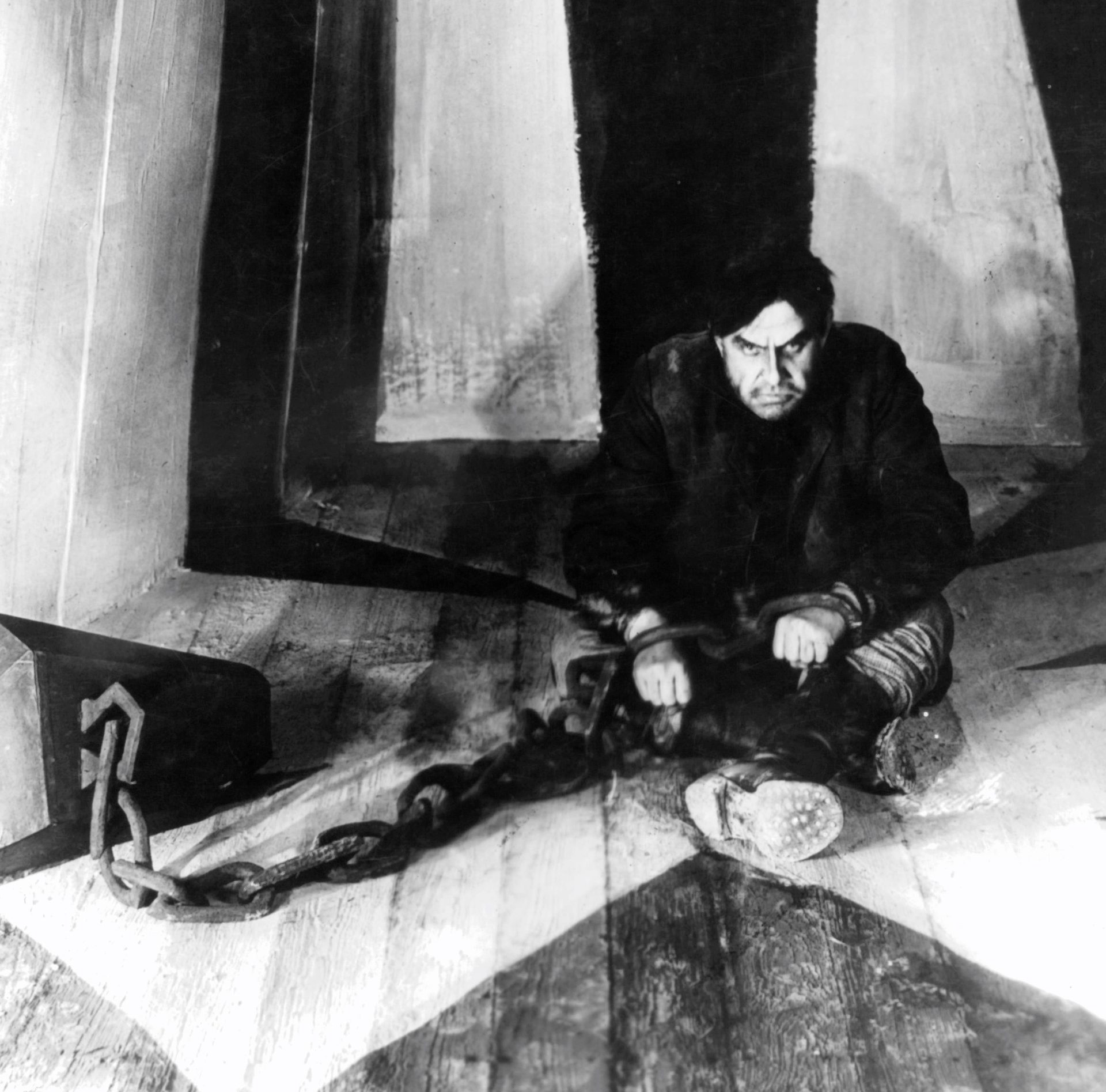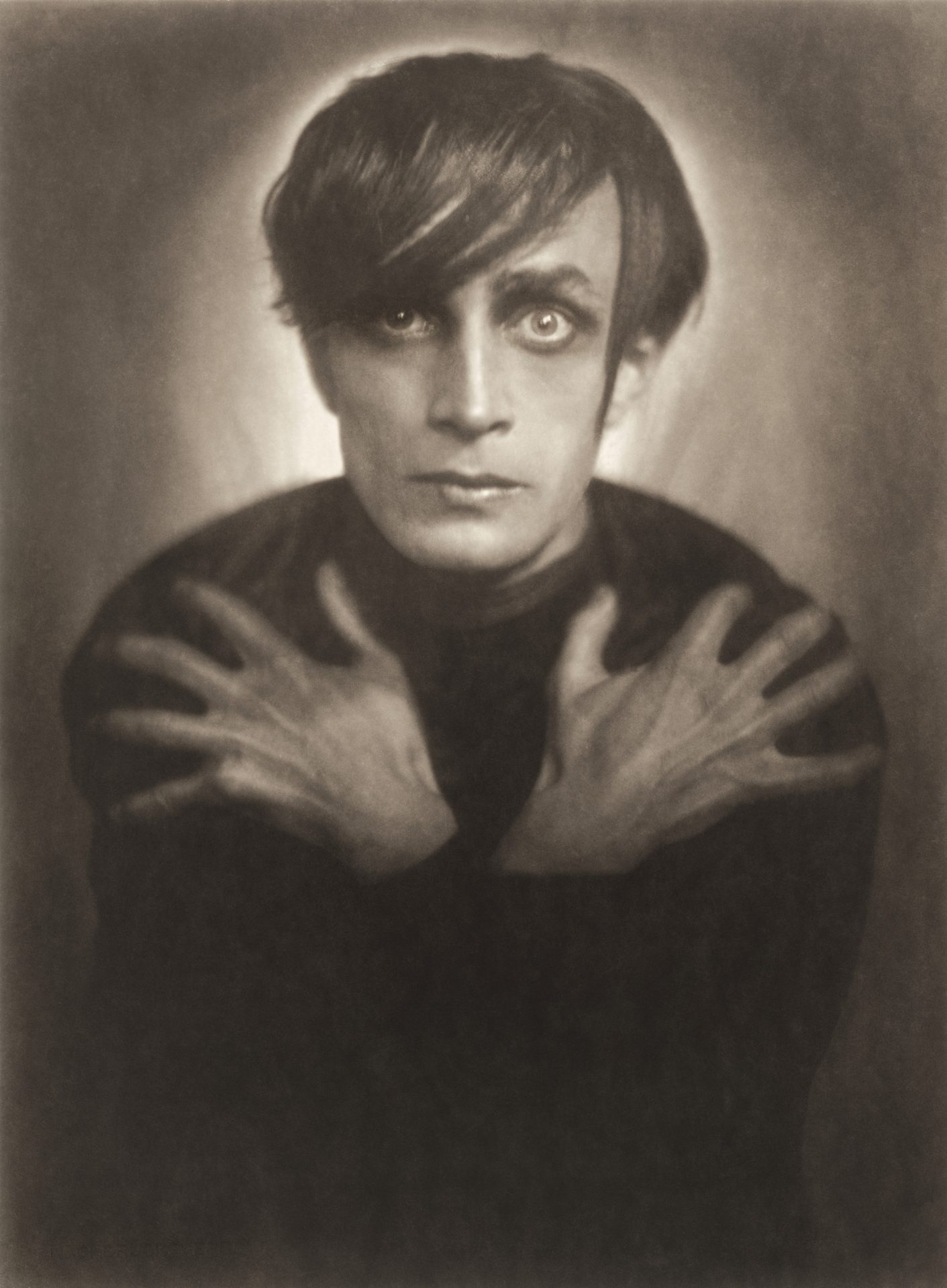Stathis Anninos, one of the most versatile musicians of his generation, accompanies live with Dimitris Klonis and Rafael Meleteas in Robert Wiene’s masterpiece The Laboratory of Dr. Caligari. The hypnotist Dr. Caligari, the sleepwalker Cesare, and a series of mysterious nocturnal murders “haunt” the Megaron Garden through atmospheric soundscapes, diverse musical admixtures and the sounds of piano, harpsichord, drums, bass, Fender Rhodes and analog synthesizers.
The film is the premier silent creation of German expressionism. Since its premiere on February 27, 1920, it has never ceased to engage, influence, and inspire directors and writers. Along with Battleship Potemkin, it is considered perhaps the most important film in the development of cinema. And indeed, its influence is definitive for cinema: its light shading as the main expression of light, its nightmarish atmosphere, its distorted perspective and “crooked” shooting angles, its dystopian and unrealistic sets, its intense make-up and range of performances, its unrealistic plot and controversial ending.
But Dr. Caligari’s greatest legacy is that this is the film that “announced”, and at the same time affirmed, that cinema is and should be seen as an important art form.
Co-production: Megaron the Athens Concert Hall & Greek Culture Educational & Research Centre
Sponsored by

Spectators in the Megaron Garden sit on the grass. They can bring cushions or a throw.


